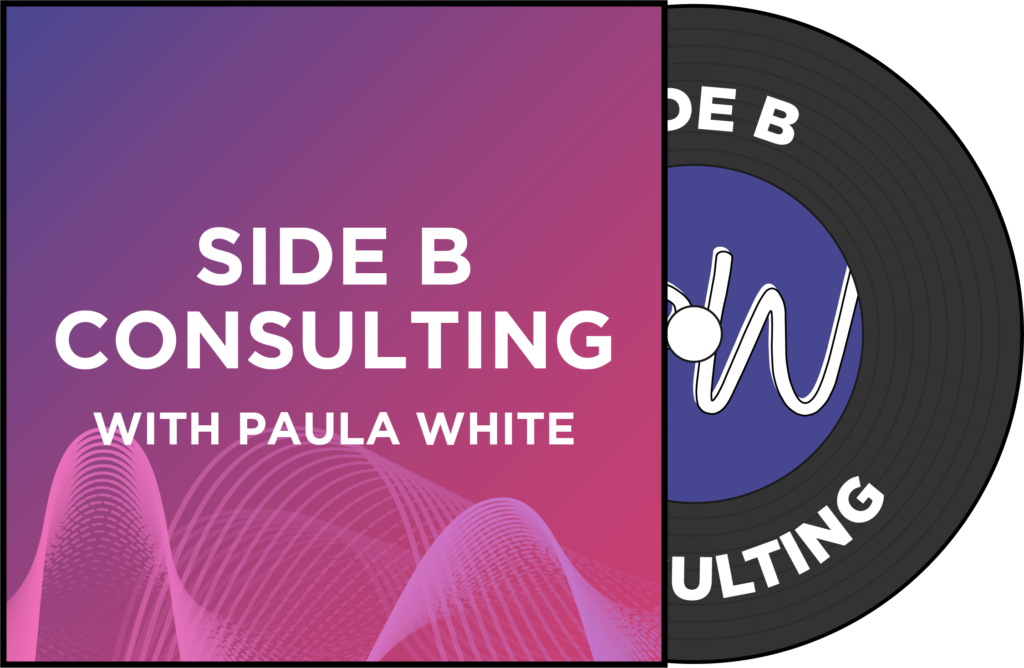Making Both Sides Your Good Side
The debate of “Side B” or “B-side,” and the answer to the question I am always asked: Why is your book called Side B?
There is no debate on the proper term; it is simply an evolution of music itself, much like leadership over the years. I chose to start at the beginning.
In simplest of terms, Side-A was the popular song, the hit song intended to get significant radio time, and there is no question about terminology. Side-B, The B-Side, Side 2, and a few other terms, was the supportive or secondary song. These recordings were not meant to be heard, or so that was the intention.
However, music history shows us that there are many Side-B songs that became a hit in their own right, sometimes even becoming more popular than their Side-A counterpart.
- The Rolling Stones: “You Can’t Always Get What You Want” Side B to “Honky Tonk Woman”
- Rod Stewart: “Maggie May” Side B to “Reason to Believe”
- Kiss: “Beth” Side B to “Detroit Rock City”
- Madonna: “Into the Groove” Side B to “Angel”
Let’s look at the evolution of popularity in Side B’s hidden hits and how it relates to leadership.
Side-B (the other side) 1950’s
When the 7-in records were originally released by RCA in 1942, each single had two songs on it. The two sides of the record were originally referred to as Side A and Side B. Side A was what the artist and producers called the “main song.” It was the song that was supposed to become a “hit,” the popular song, getting as many plays from radio stations as possible. The “other” side was first known as Side B songs. The intent was that these songs would remain silent as an “unpublished single” (not on the album).
Over the years, leadership seems to have left emotional-based behaviors on the backburner. Those “unpublished” behaviors are ones we rarely speak about, like passion, trustworthiness, curiosity, kindness, courage, gratitude, optimism, sincerity, certainty, and being ethical. These Side B behaviors that help us leave a positive legacy and complement our Side A resume-based skills are necessary to balance as we climb the corporate ladder.
Today, people refer to it as the B-side. As popularity grew with more record stores popping up and people having more access to listening to radios, the radio hosts and fans were now intentionally flipping the 7-inch singles over to hear what the artist surprised them with, and Side B became more recognizable. As with everything, the lingo began to adapt and change as well, changing Side B to B-Side, seemingly to start with the letter to make it easier to identify. Some even used Side 1 and Side 2 instead.
We can see a name change mirrored in leadership, too. The term we are using now is EQ. As we are starting to see a push for leaders to show the more personal side of themselves, to bring their whole selves to the work environment, this too is evolving. Emotional intelligence plays a critical role in achievement, results, and retention. Therefore, leadership began to change and adapt too, with more emphasis being placed on empathy and emotional awareness. We started to see a small shift in leadership, and leaders were asked to bring a bit of themselves into their role.
Moving into the future, “The Double A-Side” then became popular as artists wanted to share two songs in hopes that they both would become hits. Sometimes, the songs even complimented each other. For example, Queen’s “We Will Rock You” was the Side B to the anthem “We Are the Champions,” two solid songs that were equally as successful.
Today, the current workforce is craving such leaders, ones who are not afraid of stepping into greatness with both resume and emotional-based skills. Those who can demand accountability with kindness, show a disciplined approach with sincerity, or even make decisive decisions with certainty. This is our next generation of leaders, those who expect a lot from their teams and have the trust of their employees. Leaders who are not afraid to ditch the Excel sheets for 5 minutes a day, grab a good listen to a motivational song, and get out and communicate with their people.
Are there Side B, B-Side, or Side 2 hits today? The rise of the term is making its way back, even as music becomes increasingly digital. I recently read an article, written by Keith Evanson, on https://www.vinylmeplease.com. He wrote:
“Ed Sheeran released two new songs together on January 6th. While not in the traditional A-Side/B-Side that was released in 7” records, but a bundled release all the same—”Shape of You” and “Castle on the Hill,” one track with a pop-jam vibe and the other with a quick-tempo folk style– the two tracks are specifically meant to appeal to both sides of Sheeran’s fan base. By releasing songs in this manner, it creates a new dialogue than releasing single songs. It shifts the talking point from “Is the song good?” to “Which track is your favorite?”
Keith Evanson
I look towards our future leaders to do the same: bring both sides of who they are equally and lead with their employees and customers becoming their fans. In order to do that, leaders must become intentional and aware of their Side B Behaviors, so they become a Double A-Side Leader.
Keep Rockin’ Your Talent
~Paula White


